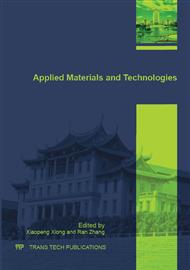p.97
p.101
p.107
p.112
p.117
p.122
p.127
p.134
p.141
Thermal Fields Simulation of the Refining Process for Si Wafer by Continuous-Wave Laser Irradiation
Abstract:
The direct removal of metal impurity from Si wafer by continuous-wave (CW) laser irradiation has been studied. The wafer was irradiated by linear (Nd:YAG) CW laser with a wavelength of 1064nm. The irradiated region of the wafer experienced melting and subsequent recrystallization process during the laser heating and cooling processes. This leads to the redistribution of the metal impurity along the depth direction. The depth profile of metal atoms in Si was measured by secondary ion mass spectrometry (SIMS). The concentration of the metal ions in the CW laser irradiated sample was dramatically decreased at the measurement range of SIMS. Thermal fields of Si wafer irradiated by CW-laser were numerically simulated to explain the SIMS results. A finite element method with a two-dimensional model was selected in the simulation process. The depth of the maximum temperature for the laser irradiated wafer in the irradiation process was related to many parameters, such as, the energy density of the laser and the velocity of the sample moving. The simulation results agree well with our experiment results.
Info:
Periodical:
Pages:
117-121
Citation:
Online since:
November 2015
Authors:
Price:
Сopyright:
© 2015 Trans Tech Publications Ltd. All Rights Reserved
Share:
Citation:


